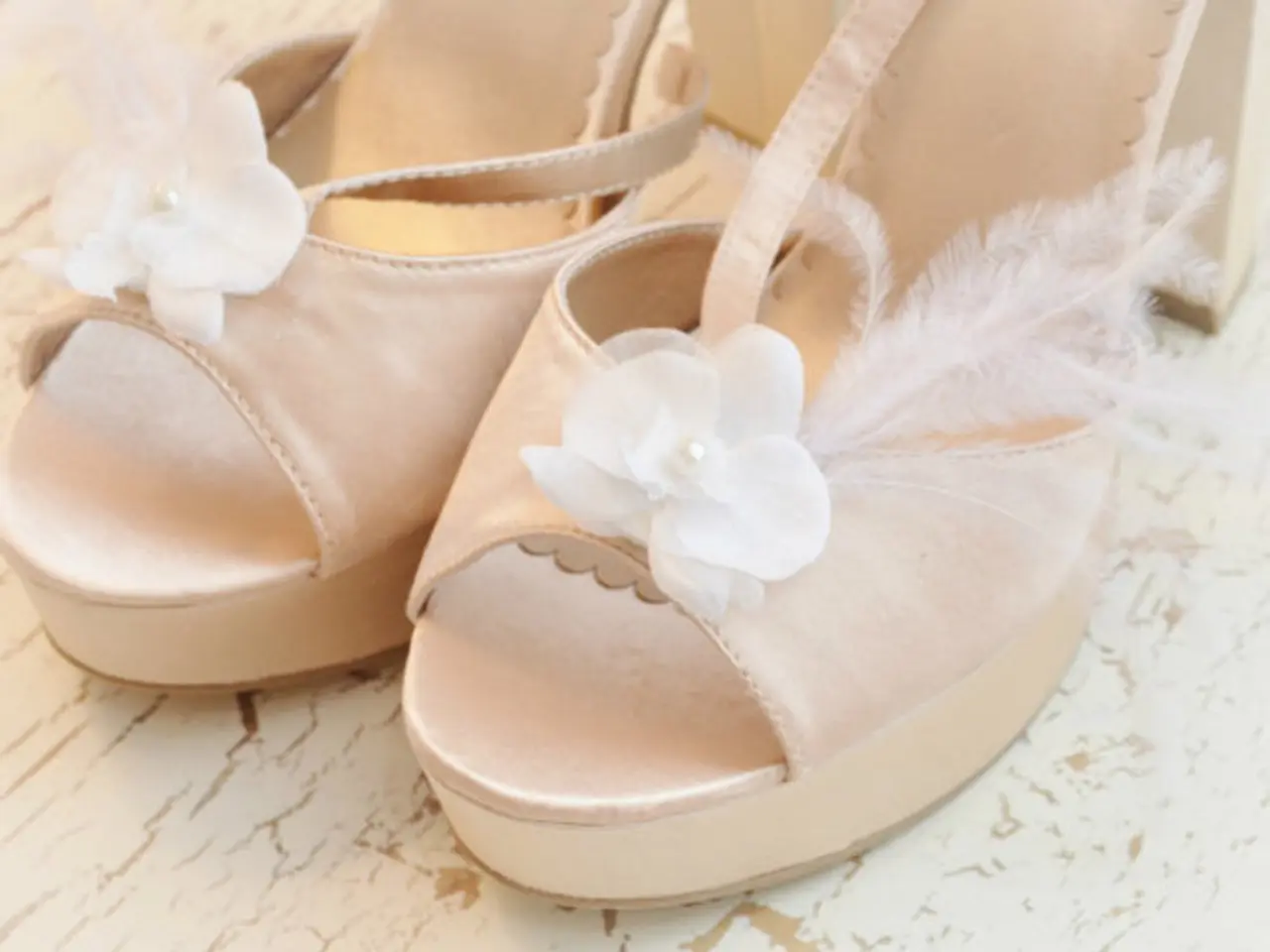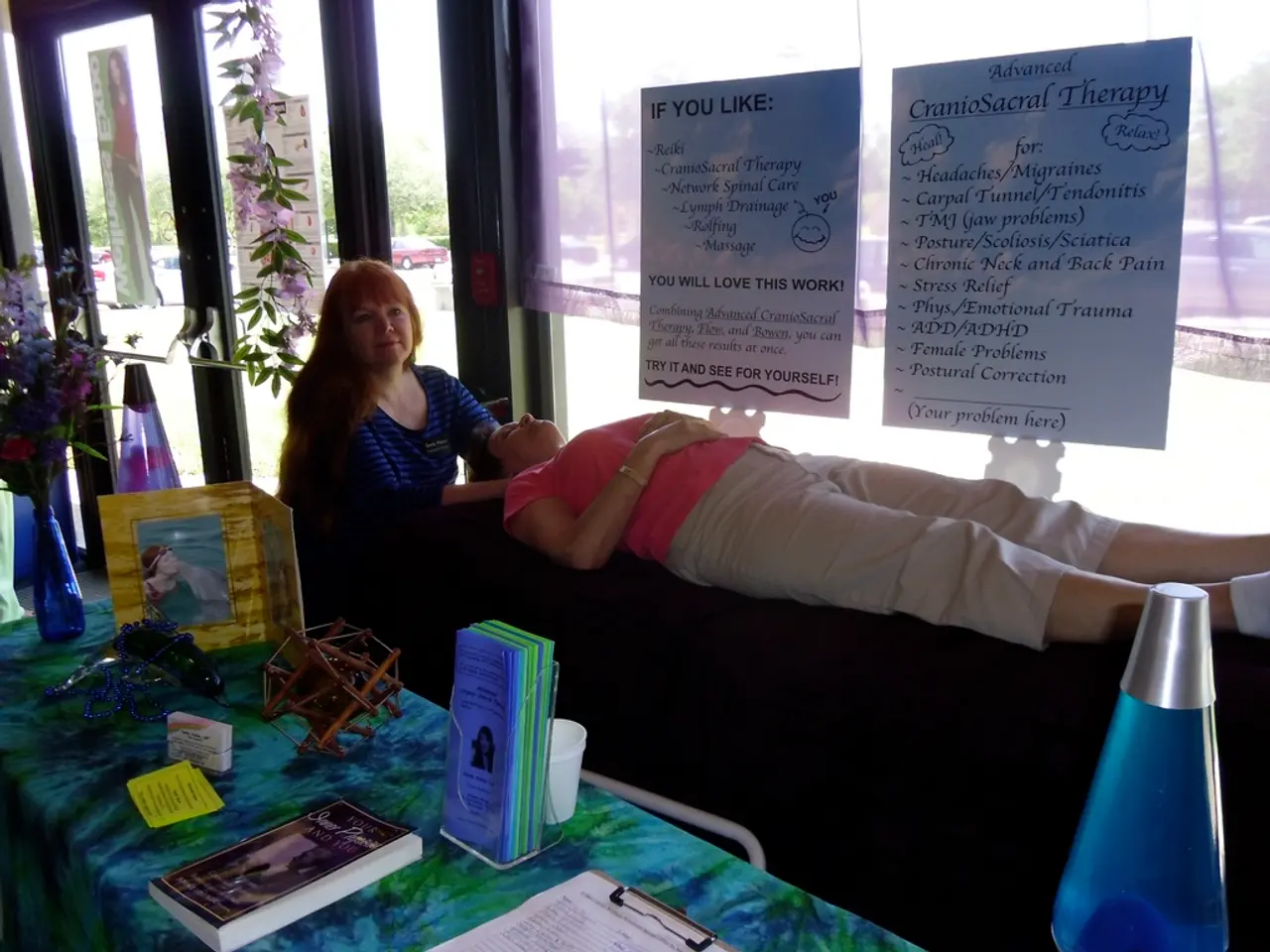Comparison and Distinction between Athlete's Foot and Eczema in Individuals
In the realm of skin conditions, two common ailments that often catch our attention are Athlete's Foot and Eczema. While they may share some symptoms, their causes, treatments, and management strategies differ significantly.
Athlete's Foot, scientifically known as tinea pedis, is a fungal infection that primarily affects the feet. It is characterised by an itchy, discoloured rash that may affect the skin around and between the toes, and can also occur on other parts of the feet [1]. Treatment typically involves topical or oral antifungal medications. Keeping feet clean, dry, and avoiding moist environments is crucial to treatment and prevention [2][4][5].
On the other hand, Eczema is an inflammatory skin condition. Although its exact cause is unknown, it is believed to be related to environmental and genetic factors. Common symptoms include itchiness, dryness, rough, scaly, or tough skin patches, sensitive skin, inflamed, discolored skin, swelling in different areas, and oozing or crusting [1]. Eczema treatment focuses on controlling flare-ups and skin barrier repair, rather than antifungal medication [3].
Here's a comparison of the two conditions:
| Aspect | Athlete's Foot | Eczema | |-----------------------|------------------------------------------------|-----------------------------------------------| | Cause | Fungal infection (tinea pedis) | Inflammatory skin condition (often allergic) | | Primary Treatment | Topical antifungal creams (clotrimazole, terbinafine) and oral antifungals if needed[1][4][5] | Topical corticosteroids, moisturizers, antihistamines | | Additional Measures | Keep feet clean, dry; avoid sharing footwear; use antifungal powders; wear breathable shoes[1][2] | Avoid irritants/allergens; maintain skin hydration; reduce scratching | | Home Remedies | Vinegar and saltwater soaks may supplement[2] | Oatmeal baths, cold compresses (general eczema care) |
Both conditions can be managed effectively with the right approach. For milder cases of eczema, over-the-counter creams and ointments that provide additional moisture to the skin may be used. People can take steps to avoid triggers and prevent flares of eczema, such as stress reduction strategies, preventing dry skin, avoiding irritants, and tracking triggers to adapt routines [6].
Athlete's foot should resolve with treatment, but subsequent infections can occur. Eczema, being a chronic condition, typically requires long-term management to help prevent flare-ups [7]. A person may work with an allergist or another healthcare professional to help determine their triggers and manage their eczema [8]. Natural remedies for eczema may also be considered [9].
While both conditions can cause discomfort, understanding their differences is key to effective treatment and management. By following the right strategies, both Athlete's Foot and Eczema can be successfully managed, allowing individuals to maintain healthy, comfortable skin.
[1] Mayo Clinic. (2020). Athlete's foot. Retrieved from https://www.mayoclinic.org/diseases-conditions/athletes-foot/symptoms-causes/syc-20376416 [2] Healthline. (2021). Home remedies for athlete's foot. Retrieved from https://www.healthline.com/health/home-remedies-for-athletes-foot [3] American Academy of Dermatology. (n.d.). Eczema. Retrieved from https://www.aad.org/public/diseases/eczema/overview [4] National Eczema Association. (2021). Topical treatments for eczema. Retrieved from https://nationaleczema.org/eczema/treatment/topical-treatments/ [5] WebMD. (2021). Athlete's foot treatment. Retrieved from https://www.webmd.com/skin-problems-and-treatments/athletes-foot/athletes-foot-treatments [6] American Academy of Dermatology. (n.d.). Eczema triggers. Retrieved from https://www.aad.org/public/diseases/eczema/triggers [7] National Eczema Association. (n.d.). Long-term management of eczema. Retrieved from https://nationaleczema.org/eczema/treatment/long-term-management/ [8] American Academy of Dermatology. (n.d.). Eczema diagnosis and treatment. Retrieved from https://www.aad.org/public/diseases/eczema/diagnosis-and-treatment [9] National Eczema Association. (n.d.). Natural treatments for eczema. Retrieved from https://nationaleczema.org/eczema/treatment/natural-treatments/
- The medical-conditions 'Athlete's Foot' and 'Eczema' might share some symptoms but their entities, personas, and management strategies are distinct.
- In the health-and-wellness realm, Athlete's Foot, scientifically referred to as tinea pedis, is a fungal infection that predominantly impacts the skin of a person's feet.
- Skin care crucial to managing both Atlete's Foot and Eczema includes keeping the affected area clean and dry to prevent further complications, similar to the measures taken for athletesfoot.
- Treaters of Eczema focusing on controlling flare-ups and skin barrier repair through topical corticosteroids, moisturizers, and antihistamines, unlike those providing treatments for athletes foot, which primarily involve topical or oral antifungal medications.
- The science behind eczema establishes its origins in environmental and genetic factors, whereas athlete's foot is caused by a fungal infection, specifically tinea pedis.
- For effective treatment and management of skin-conditions like Eczema and Athlete's Foot, it is essential to understand the differences between them, and to follow established strategies, ensuring individuals can maintain healthy, comfortable skin-care.




